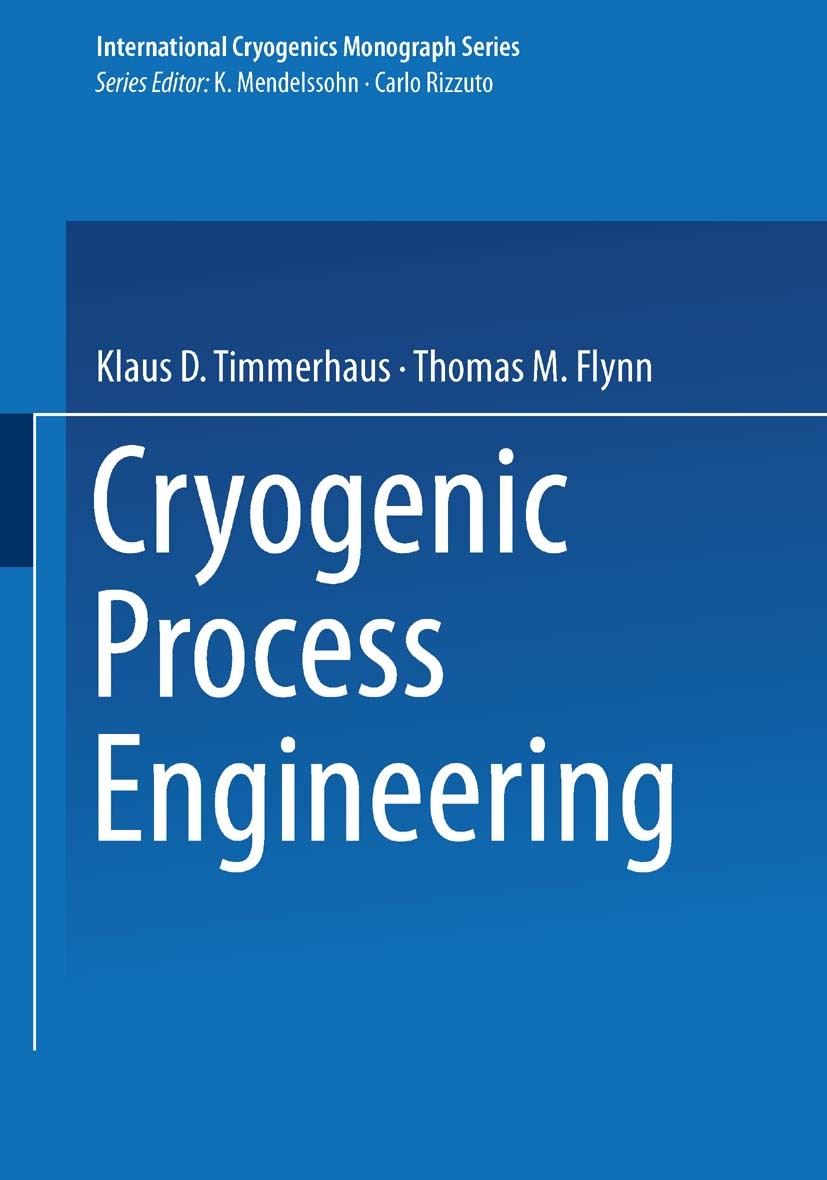| 書目名稱 | Cryogenic Process Engineering | | 編輯 | Klaus D. Timmerhaus,Thomas M. Flynn | | 視頻video | http://file.papertrans.cn/241/240505/240505.mp4 | | 叢書名稱 | International Cryogenics Monograph Series | | 圖書封面 |  | | 描述 | Cryogenics, a term commonly used to refer to very low temperatures, had its beginning in the latter half of the last century when man learned, for the first time, how to cool objects to a temperature lower than had ever existed na tu rally on the face of the earth. The air we breathe was first liquefied in 1883 by a Polish scientist named Olszewski. Ten years later he and a British scientist, Sir James Dewar, liquefied hydrogen. Helium, the last of the so-caBed permanent gases, was finally liquefied by the Dutch physicist Kamerlingh Onnes in 1908. Thus, by the beginning of the twentieth century the door had been opened to astrange new world of experimentation in which aB substances, except liquid helium, are solids and where the absolute temperature is only a few microdegrees away. However, the point on the temperature scale at which refrigeration in the ordinary sense of the term ends and cryogenics begins has ne ver been weB defined. Most workers in the field have chosen to restrict cryogenics to a tem- perature range below -150°C (123 K). This is a reasonable dividing line since the normal boiling points of the more permanent gases, such as helium, hydrogen, neon, nitrogen, oxyg | | 出版日期 | Book 1989 | | 關(guān)鍵詞 | cryogenics; design; development; engine; hydrogen; liquid; process engineering; solid; temperature | | 版次 | 1 | | doi | https://doi.org/10.1007/978-1-4684-8756-5 | | isbn_softcover | 978-1-4684-8758-9 | | isbn_ebook | 978-1-4684-8756-5Series ISSN 0538-7051 Series E-ISSN 2199-3084 | | issn_series | 0538-7051 | | copyright | Springer Science+Business Media New York 1989 |
The information of publication is updating

|
|
 |Archiver|手機版|小黑屋|
派博傳思國際
( 京公網(wǎng)安備110108008328)
GMT+8, 2025-10-5 11:44
|Archiver|手機版|小黑屋|
派博傳思國際
( 京公網(wǎng)安備110108008328)
GMT+8, 2025-10-5 11:44


